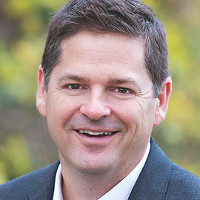Sean Doherty

Professor
Faculty of Science
Geography and Environmental Studies
Waterloo, Ontario
sdoherty@wlu.ca
Office:
(519) 884-0710 ext. 2044
Media Relations
Aonghus Kealy
Communications and Media Relations Officer
akealy@wlu.ca
(548) 889-4855
Click to Expand >>
Communications and Media Relations Officer
akealy@wlu.ca
(548) 889-4855
Click to Expand >>
Media Relations
Aonghus Kealy
Communications and Media Relations Officer
akealy@wlu.ca
(548) 889-4855
Lori Chalmers Morrison
Director: Integrated Communications
lchalmersmorrison@wlu.ca
(548) 889-4857
Vanessa Barrasa
Director: Communications & Issues Management
vbarrasa@wlu.ca
(548) 889-3812
Brantford Campus:
Beth Gurney
Director, Strategic Communications and Community Engagement
bgurney@wlu.ca
(548) 889-4199
Click to Shrink <<
Communications and Media Relations Officer
akealy@wlu.ca
(548) 889-4855
Lori Chalmers Morrison
Director: Integrated Communications
lchalmersmorrison@wlu.ca
(548) 889-4857
Vanessa Barrasa
Director: Communications & Issues Management
vbarrasa@wlu.ca
(548) 889-3812
Brantford Campus:
Beth Gurney
Director, Strategic Communications and Community Engagement
bgurney@wlu.ca
(548) 889-4199
Click to Shrink <<
Bio/Research
Sean Doherty is a native of Kitchener-Waterloo and graduate of the universities of Waterloo (BES and MA in Geography) and Toronto (PhD Civil Engineering). He has 20+ years of teaching and research experience.
Professor Doherty loves to engage students in the classroom using novel methods...
Click to Expand >>
Professor Doherty loves to engage students in the classroom using novel methods...
Click to Expand >>
Bio/Research
Sean Doherty is a native of Kitchener-Waterloo and graduate of the universities of Waterloo (BES and MA in Geography) and Toronto (PhD Civil Engineering). He has 20+ years of teaching and research experience.
Professor Doherty loves to engage students in the classroom using novel methods such as team-based learning, and has led exciting field camps for students to places such as the Peru, the Rockies, and Pinery Provincial Park. He will talk your ear off about cooking, brewing and playing hockey.
Professor Doherty's research has transitioned from urban/transport to health geography. He is exploring some rather novel questions:
-Can a smartphone be a health device?
-How are parks making us healthier?
-Does your blood glucose vary over space?
-Can text messages make you eat more local foods?
He is especially interested in body-based sensors such as GPS and accelerometers, which are dramatically changing Geomatics, and leading to breakthroughs in our understanding of exposure to risks and disease.
Click to Shrink <<
Professor Doherty loves to engage students in the classroom using novel methods such as team-based learning, and has led exciting field camps for students to places such as the Peru, the Rockies, and Pinery Provincial Park. He will talk your ear off about cooking, brewing and playing hockey.
Professor Doherty's research has transitioned from urban/transport to health geography. He is exploring some rather novel questions:
-Can a smartphone be a health device?
-How are parks making us healthier?
-Does your blood glucose vary over space?
-Can text messages make you eat more local foods?
He is especially interested in body-based sensors such as GPS and accelerometers, which are dramatically changing Geomatics, and leading to breakthroughs in our understanding of exposure to risks and disease.
Click to Shrink <<